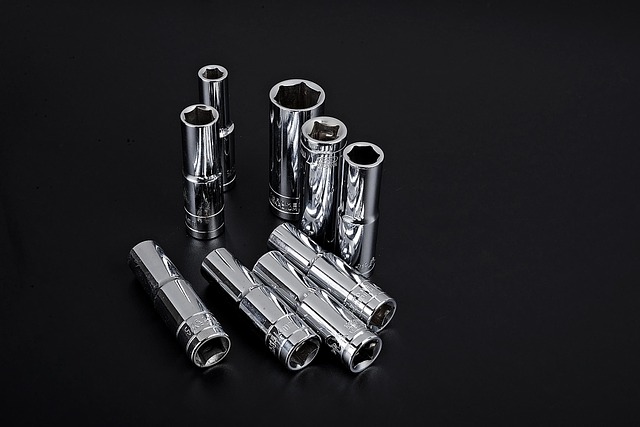OTC wart removers are popular but carry risks; surgical wart removal offers quicker relief but is more expensive and invasive. Consulting a healthcare professional is crucial to deciding between OTC treatments and surgical procedures like cryosurgery or laser treatments, based on wart severity, location, and potential complications including scarring and infection. Cost also varies significantly between methods, with OTC options being budget-friendly but requiring longer application times.
When warts appear, the choice between over-the-counter (OTC) removers and surgical removal can be daunting. This article guides you through these options, focusing on the safety and effectiveness of OTC treatments and the considerations for a surgical wart removal procedure. We explore potential risks, complications, and costs to help you make an informed decision. Understanding each method’s pros and cons is crucial in selecting the best approach for your skin health.
- Over-the-Counter Wart Removers: Safe and Effective?
- Surgical Wart Removal Procedure: When Is It Necessary?
- Potential Risks and Complications of Each Method
- Cost Comparison: OTC vs. Surgical Wart Removal
Over-the-Counter Wart Removers: Safe and Effective?

Over-the-counter (OTC) wart removers have gained popularity as a non-invasive and potentially safer alternative to surgical wart removal procedures like those offered in private wart removal West-Midlands Wolverhampton clinics or other urban centres like Manchester. These OTC products typically contain chemicals that work to dissolve or burn away warts, aiming to eliminate them without the need for anaesthesia or medical intervention. While many people find success with these removers, it’s essential to understand their limitations and potential risks.
For some, especially those with weakened immune systems, relying on OTC wart removal might not be advisable. Wart removal for immunocompromised individuals requires special consideration due to the body’s diminished ability to fight off infections. In such cases, consulting a healthcare professional is crucial before attempting any at-home treatment, including surgical procedures like cryotherapy or laser treatments, which are sometimes available in specialized clinics across the UK.
Surgical Wart Removal Procedure: When Is It Necessary?

Surgical wart removal is a procedure that may be recommended when over-the-counter treatments have proven ineffective or when warts are causing significant discomfort, bleeding, or pain. This method involves a medical professional excising the wart and sometimes the surrounding skin to ensure complete removal. It’s particularly suitable for large, complex, or persistent warts that don’t respond to other treatments.
During the surgical procedure, local anaesthesia is typically used to numb the affected area before the doctor carefully cuts out the wart. The recovery time varies depending on the severity of the warts and individual healing capabilities. In many cases, patients can expect some discomfort and swelling during the initial stages of healing, but how quickly can warts disappear after surgery depends on various factors, including the size, type, and number of warts removed. Private wart removal Essex Chelmsford clinics offer this service for those seeking swift and effective relief from stubborn warts.
Potential Risks and Complications of Each Method

When considering over-the-counter (OTC) wart removers versus surgical wart removal procedures, it’s crucial to weigh the potential risks and complications of each method. While OTC options are generally safe and accessible, they may not be as effective for stubborn or widespread warts. Side effects can include skin irritation, pain during application, and the possibility of the wart returning. Moreover, some products contain chemicals that can cause temporary damage to surrounding healthy skin if not used correctly.
In contrast, surgical wart removal procedures, like those offered at private clinics in Bradford, Epsom, or Blackpool, offer a more definitive solution. Common procedures include cryosurgery (freezing the wart) and laser treatments. While these methods are generally quick and effective, they carry their own set of risks. Complications may include scarring, infection, and temporary numbness or pain at the treatment site. It’s important to consult with a healthcare professional to determine the best course of action based on the severity and location of your warts.
Cost Comparison: OTC vs. Surgical Wart Removal

When considering options for removing warts, one of the primary factors to weigh is cost. Over-the-counter (OTC) wart removers are generally more affordable than surgical procedures, making them an attractive choice for those on a budget. These at-home treatments often come in the form of gels, paints, or patches that can be applied daily over several weeks. While effective, they may require patience and consistent use to achieve results.
On the other hand, surgical wart removal, typically performed by dermatologists, offers quicker relief but comes with a steeper financial investment. Private wart removal services in cities like Wakefield, Salford, or Rotherham often charge a consultation fee plus the cost of the procedure itself. This method usually involves freezing or cutting out the wart, providing immediate relief from discomfort and the visible presence of warts. However, it’s important to note that surgical procedures may have associated risks and recovery times compared to OTC options.
When deciding between over-the-counter (OTC) wart removers and surgery for unwanted warts, understanding the pros and cons of each method is crucial. While OTC options are safe, effective, and cost-friendly, they may require consistent application and patience. On the other hand, surgical wart removal offers swift relief but comes with potential risks and a higher price tag. Considering your specific case and medical history, you can make an informed decision, whether opting for a DIY approach or consulting a healthcare professional for a more permanent solution like the surgical wart removal procedure.
